Research
ACTIVE PROJECTS (2020 - present)
Hydrodynamics & biomechanics of cancer cell migration through constriction networks



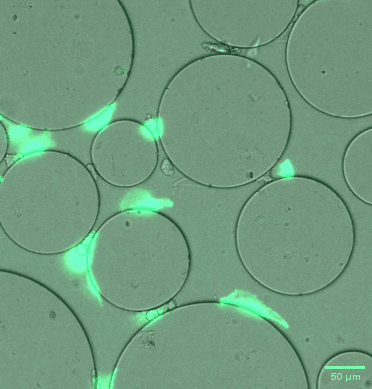
Supervised MSc candidates: Tim Winkel, Dieke Gabriels,Florine Buijtenhuis, Jisca Barbian
Host Research Lab: Pouyan Boukany Lab, Chemical Engineering, TU Delft
During cancer metastasis, cells detach from a primary tumor into the circulatory system, where they become circulating tumor cells (CTCs). These CTCs, either as single cells or clusters, navigate through a complex vascular network comprising veins, arteries, and capillaries. During this transit, they are subjected to diverse mechanical and chemical stimuli—ranging from deformation through narrow capillary-like constrictions to fluid shear stress from blood flow, as well as biochemical gradients in the microenvironment. One critical biological response to such cues is the epithelial-to-mesenchymal transition (EMT), wherein epithelial cells acquire mesenchymal traits that enhance migratory and invasive capacity. Similarly, chemical gradients can induce directed cell migration via chemotaxis. In my current project, we are investigating how hydrodynamic forces and mechanobiological factors influence cancer cell behavior during migration through microfabricated constriction networks designed to mimic the architecture of the vascular system.
Biomechanics of tumor microenvironment using microfluidics
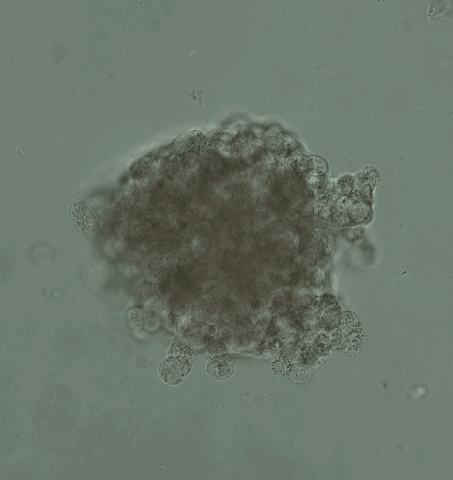
Supervised PhD candidate: Zaid Rahman
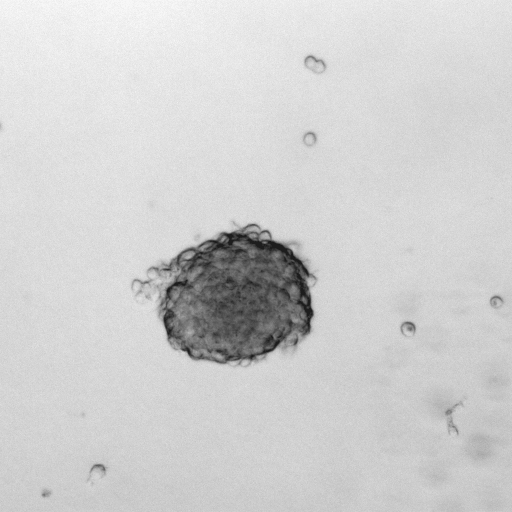
Cancer cell (MV3) dissemination through collagen matrix
Supervised PhD candidate: Zaid Rahman


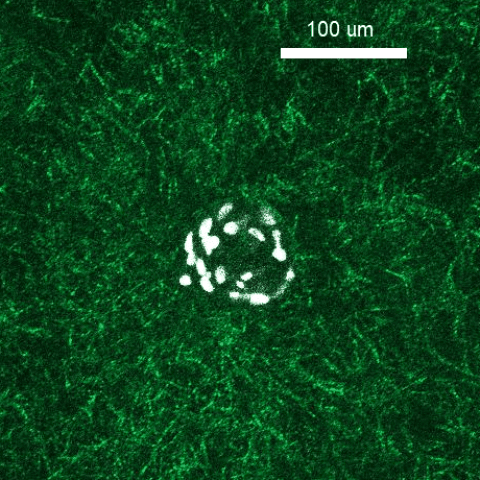
Mechanical remodeling and chemical degradation of collagen fibers by Cancer Assisted Fibroblasts (CAF)
Supervised PhD candidate: Pranav Mehta
Host Research Lab: Pouyan Boukany Lab, Chemical Engineering, TU Delft
External collaborators:
Gijsje Koenderink, Bionanoscience, TU Delft
Peter ten Djike, Leiden University Medical College
In a series of interdisciplinary projects focused on the biophysics of the tumor microenvironment, we are investigating how mechanical and biochemical cues influence cancer progression and metastasis using advanced microfluidic and 3D culture platforms. In one study, we developed and implemented a 3D microfluidic model to quantify spatiotemporal TGF-β/Smad signaling (CAGA-12-GFP reporter gene) and vimentin biomarker (VIM-RFP reporter gene) activity under interstitial flow in lung cancer (A549) spheroids. In another line of work, we are examining cancer cell dissemination through collagen matrices, highlighting the interplay between matrix architecture, cell morphology, and migration mode. We are also exploring how Cancer-Associated Fibroblasts (CAFs) mechanically remodel and enzymatically degrade collagen networks, driving collective invasion of cancer cells. Together, these projects combine quantitative imaging, microfluidics, and matrix biomechanics to provide insight into tumor-stroma interactions and the mechanisms underlying metastatic dissemination.
-
Nagle, I, Tavasso, M., Bordoloi, A.D., Muntz, I., Koenderink, G.H., Boukany, P., Invasive cancer cells soften collagen networks and disrupt stress-stiffening via volume exclusion, contractility and adhesion', (under review)
-
Mehta, P. Bordoloi, A.D., Ravensbergen, C., David, K., Liefers, G-J., Mesker, W., Ten Dijke, P. , Boukany, P. 'Inter-Spheroid Proximity and Matrix Remodeling Determine CAF-Mediated Cancer Cell Invasion', (under review)
-
Van der Net, A., Rahman, Z., Bordoloi, A.D., Muntz, I, Ten Dijke, P., Boukany, P., and Koenderink, G. 'EMT-related cell-matrix interactions are linked to states of cell unjamming in cancer spheroid invasion', iScience, 27, 12, 111424, 2024
-
Rahman, Z., Bordoloi, A.D., Rouhana, H, Tavasso, M., van der Zon, G., Garbin, V., Ten Dijke, P. and Boukany, P., 'Interstitial flow potentiates TGF-β/Smad-signaling activity in lung cancer spheroids in a 3D-microfluidic chip', Lab-on-a-Chip 24, (422-433), 2024
Bulk viscoelasticity linked to metastatic potential of breast cancer spheroids



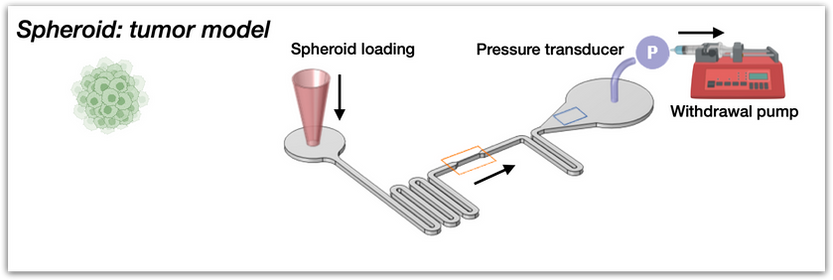
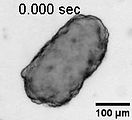
DYNAMIC COMPRESSION
RELAXATION

In this project, we explored how the mechanical properties of breast cancer spheroids correlate with their metastatic potential. Using a microfluidic platform, we subjected spheroids derived from benign (MCF-10A) and malignant (MCF-7 and MDA-MB-231) breast cell lines to dynamic compression, followed by monitoring their relaxation behavior. Our findings revealed that benign spheroids exhibited higher elasticity and viscosity, indicating greater resistance to deformation. In contrast, malignant spheroids were more deformable and showed distinct relaxation patterns. Notably, while both malignant types had similar viscoelastic properties during compression, their relaxation behaviors differed significantly, reflecting variations in cytoskeletal organization and cell-cell adhesion. This research underscores the potential of using viscoelastic properties as mechanical biomarkers to assess tumor aggressiveness, offering insights that could inform future diagnostic and therapeutic strategies.
Supervised PhD candidate: Margherita Tavasso
Host Research Lab: Pouyan Boukany Lab, Chemical Engineering, TU Delft
-
Tavasso, M., Bordoloi, A.D., Tanré, E., Garbin, V. and Boukany, P., 'Linking metastatic potential and viscoelastic properties of breast cancer spheroids via dynamic compression and relaxation in microfluidics', Advanced Healthcare Materials, 2402715, 2024
Bacterial invasion into dead-end pores, role of chemotaxis & quorum sensing on local biomass growth


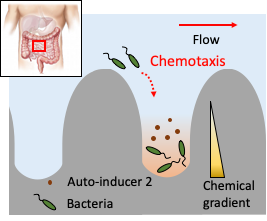
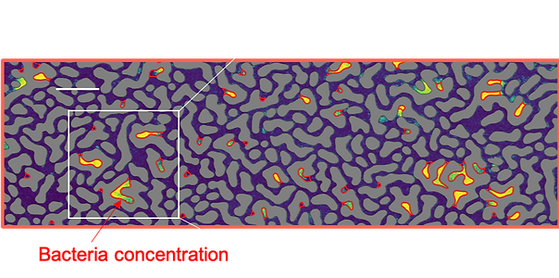
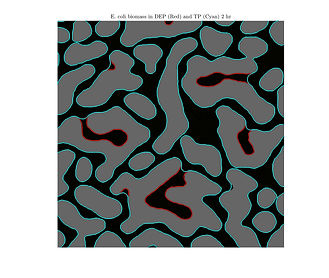
Biomass accumulation
This research highlights the significant role of microscale structural features and fluid dynamics in shaping bacterial distribution and behavior in microenvironment mimicking the gut. Under fluid flow conditions, gradients of the quorum sensing molecule autoinducer-2 (AI-2) form within the medium. These gradients prompt bacteria (E. Coli) to exhibit chemotactic behavior, leading them to accumulate preferentially in the dead-end pores (DEP). Within these confined spaces, the combination of bacterial growth and cell-to-cell collisions facilitate the formation of suspended aggregates. As resources like nutrients and oxygen became limited in these crowded regions, the bacteria initiate a mechanical evasion response, dispersing from the depleted DEPs.
-
Scheidweiler, D., Bordoloi, A.D., Jiao, W., Sentchilo, V., Bollani, M., Chhun, A., Engel, P, and de Anna, P. Spatial structure, chemotaxis and quorum sensing shape bacterial biomass accumulation in complex porous media, Nature Communications 15, 191, 2024 [Link]
Microfluidic investigation of colloid transport in complex porous microsystems
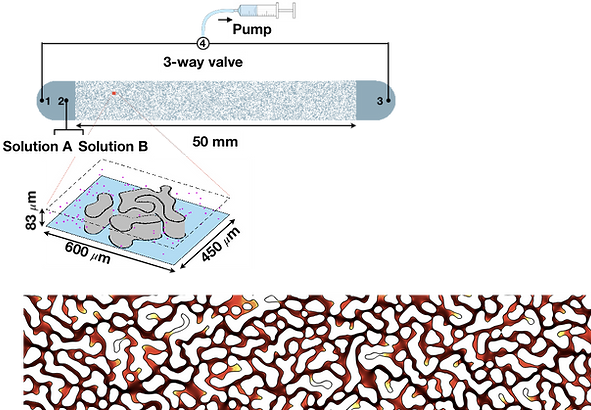


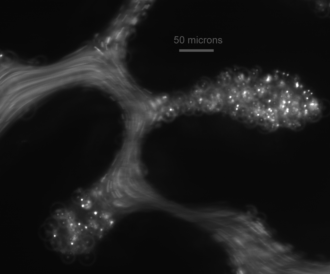
Predicting transport and dispersal patterns in porous media is important for natural systems (e.g. in soils and sedimentary environments) as well as bio-engineered systems (drug or nutrient delivery). We investigate the transport of colloids in a heterogeneous porous medium engineered in microuidic channels featuring complex grain structures with dead-end pores. Using microfluidic experiments and numerical simulation, we investigate the velocity fields and the breakthrough curves of transport of such particles in a model porous medium by emphasising on the effects of dead-end pores.
-
Bordoloi, A.D., Scheidweiler, D., Dentz, M. Bouabdellaoui, M., Abbarchi, M. and de Anna, P. Structure induced laminar vortices control anomalous dispersion in porous media, Nature Communications 13, 3820, 2022 [Link]
PAST PROJECTS
(2010-2020)
Turbulence in negatively buoyant particle plume


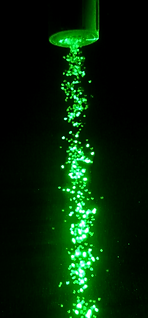
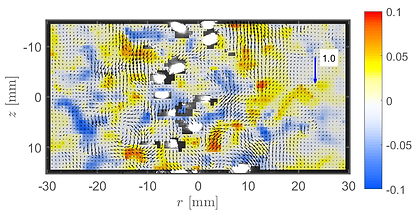
Plumes containing bubbles, particles and droplets are present in both environmental and industrial applications, such as settling sediment, rising oil droplets and gas bubbles from oil well blowouts, and CO2 plumes in oceanic sequestration. Using matched-refractive-index particle image velocimetry (MRI-PIV), we obtain the velocity field inside and around a negatively buoyant particle plume. This velocity information is important in characterizing the turbulence statistics in the interstitial fluid due to the multi-particle wake interactions. We also measure the particle phase velocity and characterize particle-slip in the plume.
-
Bordoloi, A.D., Lai, C.C.K., Clark, L. Carrillo, G.V. and Variano, E.A. Turbulence statistics in a negatively buoyant particle plume, Journal of Fluid Mechanics 896, 2021 [Link]
Rotation and orientation of finite sized particles in turbulence



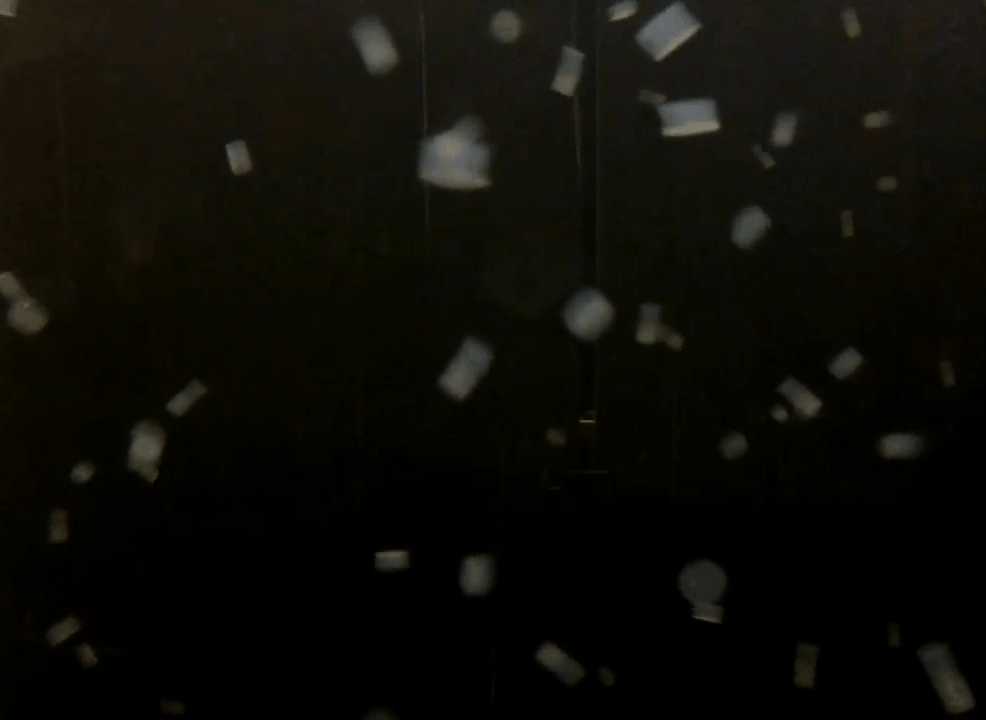
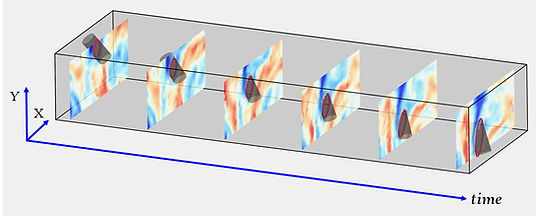
Small axisymmetric particles are known to show shape dependence in their rotational kinematics in homogenous isotropic turbulence. For example, rod-shaped particles rotate very differently compared to disc-shaped ones. This motivates us to extend this understanding to finite-sized particles (~ Taylor microscale) by examining their rotation and alignment. We have overcome the experimental challenges that have heretofore prevented the simultaneous measurement of orientation and rotation of large particles. Our experiments show equipartition of particle enstrophy for long cylinders into rotation about each of the particle's local axes. In other words, there is no preference for rotation about a particle's symmetry axis. By conducting experiments for particles with different shape and size, we show that particle's rotational enstrophy follows a power-law relationship with its volume equivalent spherical diameter.
-
Oehmke, T. B., Bordoloi, A.D., Variano, E. A, and Verhille, G., Spinning and tumbling of long fibers in isotropic turbulence, Physical Review Fluids, 6 (4), 044610, 2021 [Link]
-
Bordoloi, A.D., Variano, E. , and G., Verhille, G. Lagrangian time scale of passive rotation for mesoscale particles in turbulence, Frontiers of Marine Science, 7, (473), 2020 [Link]
-
Pujara, N., Oehmke, T.B., Bordoloi, A.D. and Variano, E.A., Rotations of large inertial cubes, cuboids, cones, and cylinders in turbulence, Physical Review Fluids, 3 (5), 054605, 2018 [Link]
-
Bordoloi, A.D. and Variano, E.A. Rotational kinematics of large non-spherical particle in turbulence, Journal of Fluid Mechanics, 815, 199-222, 2017 [Link]
Unsteady drag history of shock accelerated microparticles


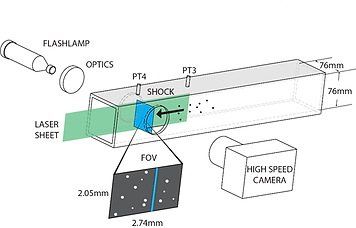
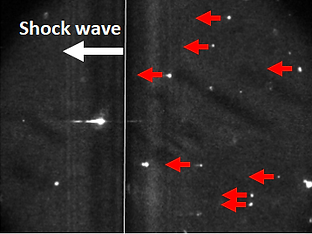
The physics underlying to the unsteady drag of shock accelerated microparticles through the relaxation zone remain mysterious due to the lack of models that are relevant over length and time scales larger than the acoustic times. Experiments at the Horizontal Shock Tube (HST) have shown that the time dependent drag coefficient of a microparticle behind a shock wave can rise to orders of magnitude larger than values predicted by existing quasi-steady and unsteady drag models.
-
Bordoloi, A.D., Martinez, A.A. and Prestridge, K. Relaxation drag history of shock accelerated microparticles Journal of Fluid Mechanics, 823, R4, 2017 [Link]
-
Bordoloi, A.D., Ding, L., Martinez, A.A., Prestridge, K. and Adrian, R.J. A new method to calculate unsteady kinematics and drag coefficient of a particle behind a shock wave Measurement Science & Technology, 29 (7), 074001, 2018 [Link]
A phase based method for Molecular Tagging Velocimetry


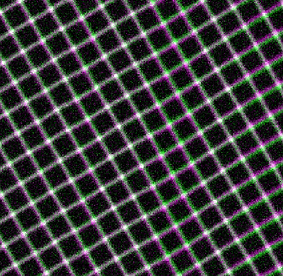
MTV synthetic image
PHASE MAPPING
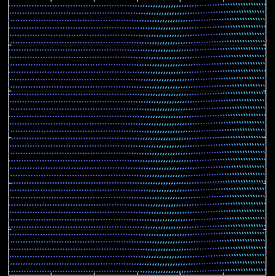
Local displacement
Recent experiments on particles accelerated by a shock wave indicate that the unsteady drag coefficients are an order of magnitude larger than the predictions from existing models (Bordoloi et al. 2017). Such discrepancy remains unexplained by current theory. This leaves a need for experimental measurements of the flow around the accelerating particles to explain the unknown unsteady effects. The conventional Particle Image Velocimetry (PIV) is limited in this flow regime by particle response time, a molecular fluorescence/phosphorescence based Molecular Tagging Velocimetry (PTV). In collaboration with the Extreme Fluids Team at Los Alamos National Laboratory, I am developing a method to map MTV image-pairs into local displacements based on phase information of the images. This method will have certain advantages over the methods based on Digital Image Correlation (DIC) due to the repetitive patterns inherent to the MTV images .
-
Charonko, Fratantonio, D., Mayer, J.M., Bordoloi, A.D., Prestridge, K.P. , Windowed Fourier transform and cross-correlation algorithms for molecular tagging velocimetry, Measurement Science and Technology, 31 (7), 074007, 2020 [Link]
Motion of Deformable particles through a narrow constriction



Squeezing of deformable particles (droplet, gel, vesicles) is of interest in both macroscopic (oil recovery, filtration) and microscopic applications (microfluidic design, textile design, food processing). By conducting experiments on gravity driven liquid drops moving through a circular orifice in presence of another liquid, we create a phase map delineating various outcomes of a drop depending on its Bond number and the orifice-to-drop diameter ratio (d/D). The outcome of a drop depends strongly on the orifice edge (round vs. sharp) and the wettability of the surface. Using refractive-index-matched PIV, we also explore the local velocity field inside a drop during its transit through the confinement.
-
Bordoloi, A.D. and Longmire E.K., Local velocity variation for a drop moving through an orifice: effects of wettability and orifice edge-morphology, Physical Review Fluids (under review) [Link]
-
Bordoloi, A.D. and Longmire, E.K., Drop motion through a confining orifice, Journal of Fluid Mechanics, 759, 520-545, 2014 [Link]
Tomographic PIV measurement of drop coalescence
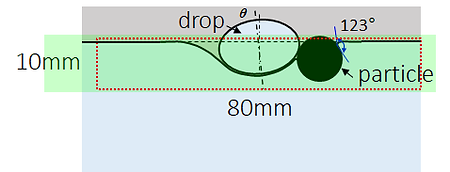
Coalescence at a quiescent oil/water interface was investigated for water based drops. In addition to a single drop case, three perturbation cases were considered corresponding with a second drop, a solid particle wetted in oil, and a solid particle wetted in water/glycerin placed adjacent to the coalescing drop. Each perturbing object caused an initial tilting of the drop, influencing the rupture of the underlying film and eventual drop collapse. Using time resolved Tomographic PIV and high-speed imaging, we examine the film retraction and the collapse mechanism for each coalescence process.


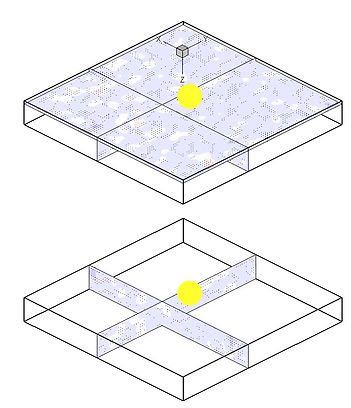
-
Bordoloi, A.D. and Longmire, E.K., Effect of neighboring perturbations on drop coalescence at an interface, Physics of Fluids, 24, 062106, 2012 [Link]